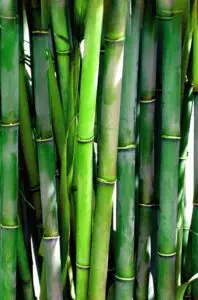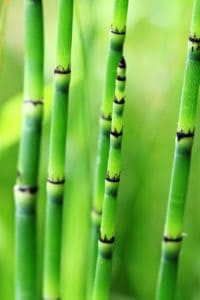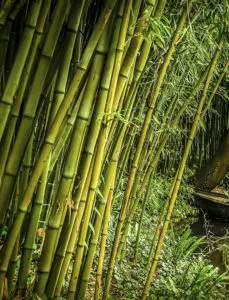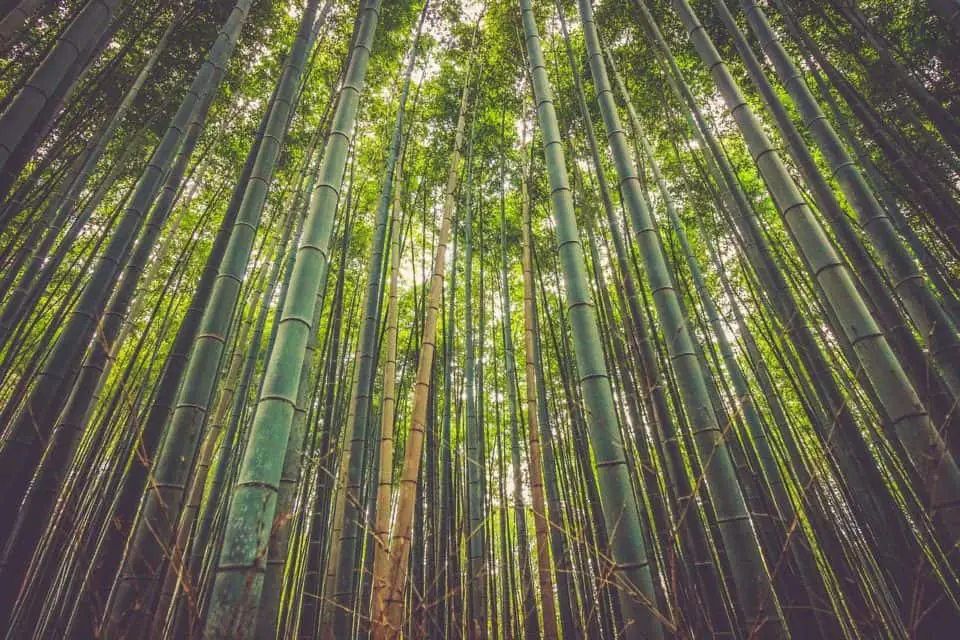Some links in the post are affiliate links and I get a commission from purchases made through some links found in the post.
Bamboos are evergreen plants that look even better when grown outdoors, where they can thrive and add to the allure of the grounds.
For most of the part, their care is relatively easy, and they will do well even in slightly neglected conditions.
However, when the plants are not growing in their native regions, some signs of your outdoor bamboo dying may show.
Today, we look at what can prompt these warning signs and what you can do about them:
PS: For the entirety of this article, assume that we are referring to real bamboo plants unless otherwise stated.
The main reasons your bamboo is dying is due to poor drainage, overwatering, underwatering, inadequate light, inadequate temperatures, pest problems, too much or too light fertilizer.
These can lead to your bamboo leaves turning yellow, turning brown or start curling or drooping and eventually dying.
Why is my Outdoor Bamboo Dying?
There are lots of reasons why your outdoor bamboo might be dying. In this article we go over the main possible reasons for this.
Why are my Outdoor Bamboo Leaves Turning Yellow?
 Bamboo plants have alluring green leaves and stems, making them a favourite for people who want to beautify their outdoors.
Bamboo plants have alluring green leaves and stems, making them a favourite for people who want to beautify their outdoors.
It can be disheartening to watch the lovely bamboo leaves turning yellow. But not to worry. In most cases, this change in colour is quite normal.
However, in some cases, you could be depriving the plant of proper care, and it could be communicating this to you. Let’s look at both instances:
Normal Yellowing
Leaf Yellowing
As the plant grows, it will shed leaves in preparation for the new ones.
To stimulate the growth of these new leaves, the plant cuts off the nutrient supply to the older leaves and instead focuses its energy on other parts of the plant.
As the new leaves emerge, you will notice that the older ones are yellowing and gradually falling off. It is pretty normal and is part of the process and should not be a cause for alarm.
In fact, you will notice that most of the time, your plant will not be wholly green. Instead, it will have some sections with yellow leaves and others with green leaves.
During some seasons, such as spring, the yellowing will become more apparent. But in others, you will barely note the difference.
For a gardening beginner, even these small changes can cause a lot of panic, especially when you get the species that drop large amounts of leaves at a time.
Check what variety you’ve grown and figure out what to expect so you can know if anything is amiss.
You know you have crossed the normal sphere and crossed to the abnormal side of things when all the leaves turn yellow and start falling off, or all the leaves start turning brown at the tips.
When the signs move towards the graver side, you need to take a more detailed approach to the problem.
Culm Yellowing
The stems can also be a reason for concern as they may appear too yellow, and you can start thinking that the outdoor bamboo is dying.
Before you start panicking, question what bamboo variety you’re growing. Some species naturally have yellow culms.
And in other cases, the culms yellow more as they age, and you may start noticing the hue more in the later stages.
It can even be that newer culms are growing yellow or brown owing to the prevailing conditions.
Once you have ruled out other possible causes of the yellowing and browning, you can trim the culms you don’t like and pave the way for new growth.
Please note that when dealing with golden bamboo, umbrella bamboo, and Phyllostachys Edulis Moso, you should be ready to see some drastic changes in the plant’s appearance as it grows and ages.
Abnormal Yellowing
Fresh Leaves
If the new leaves are coming out yellow, the plant may be lacking minerals such as iron.
This problem is common in alkaline soils, and you may need to amend the soil’s pH to a slightly acidic level.
It’s easy to figure out how much amending you may need to do. All you need is a simple pH testing kit and use it around the plant’s base for an accurate reading.
How can you fix it?
If alkalinity is the problem, you can add compost with slightly acidic materials to the soil.
Aim for the top three layers of the soil and incorporate materials such as coffee grounds to bring down that pH.
You can also try and work with a fertilizer which should not be your first choice. As much as bamboo appreciates the boost, it does not do too well when it is overfed.
The alternative can be sulfur, which you can add straight to the soil to induce more acidity.
Whatever your choice is, use moderation and follow up to see if the plant’s condition improves to help stop your outdoor bamboo from dying.
Older Leaves
 As much as you may expect the older leaves to yellow over time, it might also be a sign that the plants do not have enough fertilizer.
As much as you may expect the older leaves to yellow over time, it might also be a sign that the plants do not have enough fertilizer.
First, assess if the yellowing and resultant leaf drop are drastic.
If yes, check the last time you fertilized the soil, and if enough time has gone by, purchase fertilizer or make one using the materials available from home.
Use this mixture on the soil and keep watch over the plant to see if its condition improves over time. If not, something else might be to blame. Other factors include:
Pests
While it is not often that these plants suffer pest attacks, bamboos are also prone to mite attacks.
These show in the form of yellowish spots on the leaves.
You can choose to go the insecticide way or adopt more natural means to get rid of these pesky pests that can suck the life out of your plant.
Stress
Did you know that plants can also suffer stress? That’s right.
If you notice that your plant has suddenly started yellowing and losing leaves, the prevailing conditions may not be favourable for its growth. These include:
Being out of range
A bamboo plant will generally do well in USDA zones 5 and above.
If you have recently moved the plant from such a region to your home and notice it’s not doing too well, you might need to assess if the move was in favour of the plant.
Look at ways you can either provide the plant with reasonable conditions or how you can help it adapt to what’s available.
Sometimes, the change in appearance is only short-term, and the plant soon starts looking healthy.
Dry and cold winds
The plant will not do well if it is often in the way of cold drafts. If it’s in the open, find a way to shade it to prevent it from suffering the effects of the cold.
Reduced Growing Space
The bamboo plant is a spreader and a grower and needs enough space to thrive.
If you do not give it enough room, it will be in an unsuitable environment, where the nutrients are not enough, which will show in yellowing.
Watering problems
Too much water can cause the leaves to turn yellow. On the same note, too little water can also be to blame for this change.
Generally, the plant requires moist soil and will not do well in soggy soil. Ensure it has well-draining soil and that the soil’s top inches are dry before giving it more water.
If you need help watering your plant, try using this automatic drip irrigation kit.
Why are my Bamboo Leaves Turning Brown?
Sometimes, yellowing comes with browning tips. More often than not, it indicates that the plant is not getting enough water.
Start by checking the state of the soil. If it feels dry two inches below the surface, you need to start watering the plant more often.
You may need to increase the watering frequency or even start a drip irrigation system to prevent any room for neglect.
Many gardeners find it easier to mulch the plants at the base to keep the soil moist, add more nutrients to the soil due to the decomposing matter, and reduce maintenance needs.
If watering is not the problem, you may need to consider:
1) A Pest Infestation
Likely culprits include mites, aphids, scales, and mealybugs.
2) Heat Problems
If the plant is in direct sunlight or a hot area, the leaves can start browning in response. You may want to partially or completely shade the plant.
If your plant is struggling due to light, trying using this to help regulate the lighting.
3) Fertilizer Problems
Try this easy to use fertilizer to give your plant that little boost.
4) Exposure to Cold
We covered most of these problems and their solutions under the yellowing of bamboo leaves.
If you’re enjoying this article, check out our article on can you grow bamboo in Florida.
Why are my Bamboo Leaves Curling/Drooping?
Both of these problems point to watering issues. To know what’s to blame, assess the appearance of your plant.
If the leaves have curled along their length, it indicates you are underwatering your plant, and you need to increase its watering frequency.
You need to thoroughly wet the soil and coax the plant back to health over time. Please exercise moderation to avoid giving the plant more than it needs.
If the leaves have drooped downwards, either the plant is getting too much water, or there’s a problem with the drainage.
For too much water, all you need is to step back and give the plant time to recover before following a less intensive watering program.
If the soil is the problem, you need to incorporate well-draining materials into the soil to make it easier for water to drain.
For both these problems, you might have better luck preventing their reoccurrence by investing in a moisture gauge.
How to Revive Outdoor Bamboo
 Here, we will cover the solution in four steps:
Here, we will cover the solution in four steps:
1) Assess the plant and come up with a list of reasons your outdoor bamboo could be dying.
2) Narrow it down to the most possible causes
3) Address each cause on its own, e.g., if overwatering could be the problem, take a break and see if it helps
4) Try all the methods in succession and see if the plant improves
Most importantly, understand what variety you are growing and the likely challenges you will face.
Also, be patient as you try these recovery methods. It might be a while before you see the results.
Happy Gardening!
Before you go, here are some more related articles I encourage you to read below to help solve more of your gardening issues:
Top 5 tall potted plants for your balcony
Are Bamboo Pots Good For Plants
What are the Best Marginal Plants for Small Ponds
Written by: Daisy Njeri

